Researchers at CERN’s Large Hadron Collider explore subtle energy signals to search for new physics beyond the Standard Model.


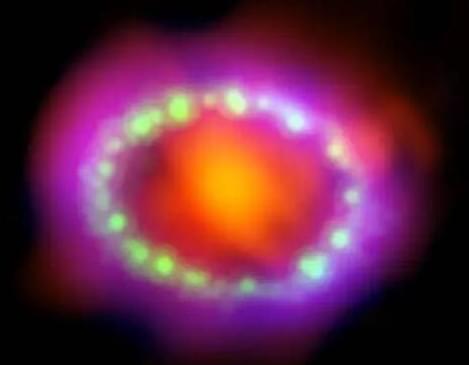
The mystery of dark matter could be solved in as little as 10 seconds.
When the next nearby supernova goes off, any gamma-ray telescope pointing in the right direction might be treated to more than a light show – it could quickly confirm the existence of one of the most promising dark matter candidates.
Astrophysicists at the University of California, Berkeley predict that within the first 10 seconds of a supernova, enough hypothetical particles called axions could be emitted to prove they exist in a relative blink.
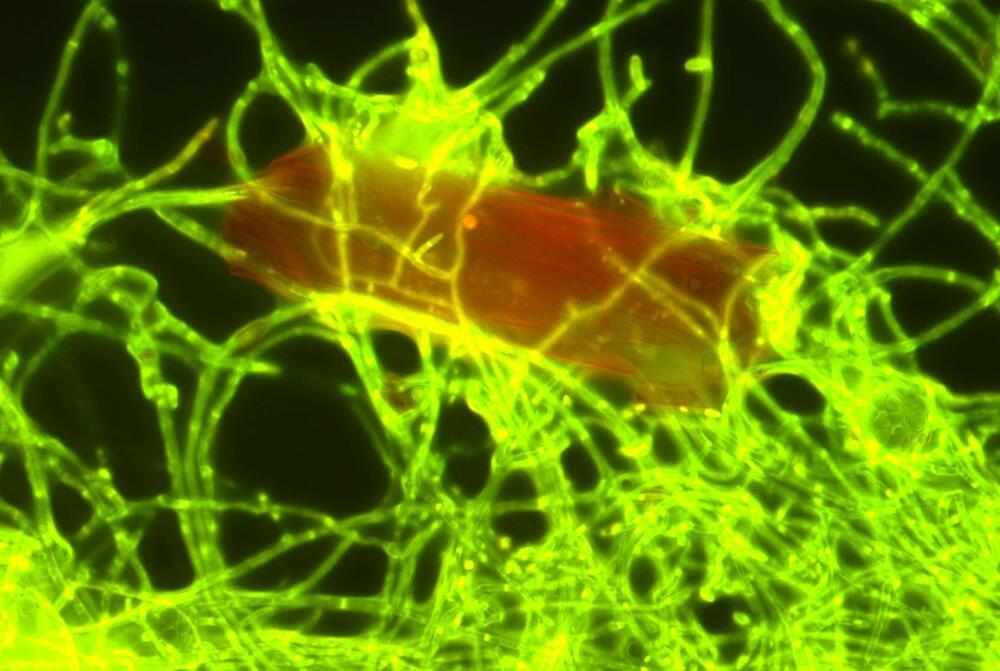
Researchers found that the fungus Parengyodontium album degrades UV-exposed polyethylene in the ocean, suggesting that similar fungi might also break down plastics in deeper waters.
Researchers, including those from NIOZ, have discovered that a marine fungus can decompose the plastic polyethylene after it has been exposed to UV radiation from sunlight. Their findings, published in the journal Science of the Total Environment, suggest that numerous other fungi capable of degrading plastic likely reside in the deeper regions of the ocean.
The fungus Parengyodontium album lives together with other marine microbes in thin layers on plastic litter in the ocean. Marine microbiologists from the Royal Netherlands Institute for Sea Research (NIOZ) discovered that the fungus is capable of breaking down particles of the plastic polyethylene (PE), the most abundant of all plastics that have ended up in the ocean. The NIOZ researchers cooperated with colleagues from Utrecht University, the Ocean Cleanup Foundation and research institutes in Paris, Copenhagen, and St Gallen, Switzerland. The finding allows the fungus to join a very short list of plastic-degrading marine fungi: only four species have been found to date. A larger number of bacteria were already known to be able to degrade plastic.
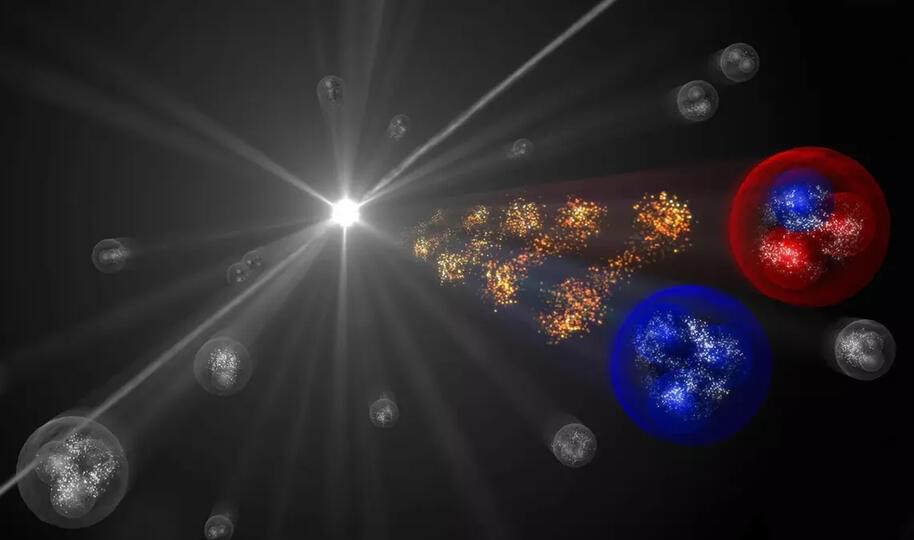
Get Nebula using my link for 40% off an annual subscription: https://go.nebula.tv/upandatom.
Watch Becoming Human: https://nebula.tv/becominghuman.
Thank you to John Norton, Brett Park, Samuel Fletcher and Guido Bacciagaluppi for your guidance and consultation with this video.
Hi! I’m Jade. If you’d like to consider supporting Up and Atom, head over to my Patreon page smile
https://www.patreon.com/upandatom.
Visit the Up and Atom store.
https://store.nebula.app/collections/up-and-atom.
https://www.youtube.com/c/upandatom.
For a one time donation, head over to my PayPal smile https://www.paypal.me/upandatomshows.

As fringe as the idea of solar radiation modification once was and as generally controversial as it remains, it is gaining some traction. Last spring, the University of Chicago hired David Keith, one of the most visible proponents of solar geoengineering, to lead a new Climate Systems Engineering initiative, committing to at least 10 new faculty hires for the program. The group will study solar geoengineering, as well as other kinds of Earth system modifications aimed at addressing the climate crisis.
With this initiative, the University of Chicago is attempting to position itself as the place for serious scientific consideration of the logistics and implications of Earth system interventions aimed at reversing or counteracting climate change. It is part of a broader university effort to become a global leader in the climate and energy space.
Previously, Keith was at Harvard University, where he helped launch the Solar Geoengineering Research Program. After repeated delays and years of controversy, Harvard recently canceled a small-scale outdoor geoengineering experiment that Keith helped plan. That experiment would have involved launching a high-altitude balloon, releasing fine particles of calcium carbonate into the stratosphere, and then sending the balloon back through the cloud to monitor how those particles disperse and interact within the atmosphere, and with solar radiation.
In today’s episode of Theories of Everything, Curt Jaimungal and Julian Barbour challenge conventional physics by exploring Barbour’s revolutionary ideas on time as an emergent property of change, the universe’s increasing order contrary to entropy, and the foundational nature of shape dynamics.
SPONSOR (THE ECONOMIST): As a listener of TOE you can get a special 20% off discount to The Economist and all it has to offer! Visit https://www.economist.com/toe.
TOE’S TOP LINKS:
Support TOE on Patreon: / curtjaimungal (early access to ad-free audio episodes!)
Enjoy TOE on Spotify! https://tinyurl.com/SpotifyTOE
Become a YouTube Member Here:
/ @theoriesofeverything.
Join TOE’s Newsletter ‘TOEmail’ at https://www.curtjaimungal.org.
LINKED MENTIONED:
The Janus Point (Julian Barbour’s book): https://www.amazon.com/Janus-Point-Ne?tag=lifeboatfound-20…
‘Relational Concepts of Space and Time’ (Julian Barbour’s 1982 paper): https://www.jstor.org/stable/687224
‘The Theory of Gravitation’ (Paul Dirac’s 1958 paper): https://www.jstor.org/stable/100497
Carlo Rovelli on TOE: • The Loop Quantum Gravity Debacle: Car…
‘On the Nature of Things’ (book): https://www.hup.harvard.edu/books/978…
Leibniz: Philosophical Writings (book): https://www.amazon.com/Leibniz-Philos?tag=lifeboatfound-20…
Elementary Principles of Statistical Mechanics (book): https://www.amazon.com/Elementary-Pri?tag=lifeboatfound-20…
The interpretations of quantum mechanics in 5 minutes (article): https://curtjaimungal.substack.com/p/.…
Sean Carroll on TOE: • The Crisis in (Fundamental) Physics i…
Timestamps:
00:00 — Introduction.
02:12 — Working Outside of Academia.
03:53 — Space, Time, Dimension.
10:40 — Mach’s Principle.
21:33 — Mach Confused Einstein.
24:22 — Two Particle Universe.
31:46 — Carlo Rovelli.
35:02 — Julian’s Ontology.
43:37 — Julian’s Theory ‘Shape Statistics’
51:11 — Leinbiz’s Philosophical Writings.
56:14 — Expansion of the Universe (Scale Invariance)
01:05:02 — Cosmological Principle.
01:15:34 — Thermodynamics.
01:17:15 — Entropy and Complexity.
01:30:40 — Wave Function / Double Slit Experiment.
01:39:21 — God.
01:44:48 — The Role of Instruments.
01:47:44 — Etymology of Pattern and Matter.
01:51:25 — Join My Substack!
Other Links:

Electrons, those fundamental particles that orbit atomic nuclei, are central to electromagnetism and chemical processes. Ever since their discovery, scientists have pondered over what electrons are made of and their basic structure. While particles such as protons and neutrons have shown internal complexity, electrons appear impenetrable to such analysis. So, what constitutes an electron? Are they truly indivisible, or do they hide smaller components within?
Speaking of the atom, the term “indivisible” now seems outdated, especially with modern scientific understanding. The notion that atoms are the most fundamental units of matter dates back to Democritus over 2,000 years ago. However, as centuries passed and scientific discoveries unfolded, it became clear that atoms were not the ultimate particles of matter. Indeed, advancements in physics have shown that atoms are made up of even smaller particles: protons, neutrons, and electrons. While protons and neutrons can be broken down into quarks, the question remains for electrons: are they also made of smaller components, or are they indivisible?
Since their discovery over 125 years ago, electrons have challenged the logic of decomposition. No experiment has yet detected any more complex internal structure, even during high-energy collisions aimed at probing deeper levels of matter. Electrons thus seem to defy the notion of being made up of smaller particles. They are currently regarded as fundamental particles within the standard model of particle physics, meaning they are entities that cannot be divided further.
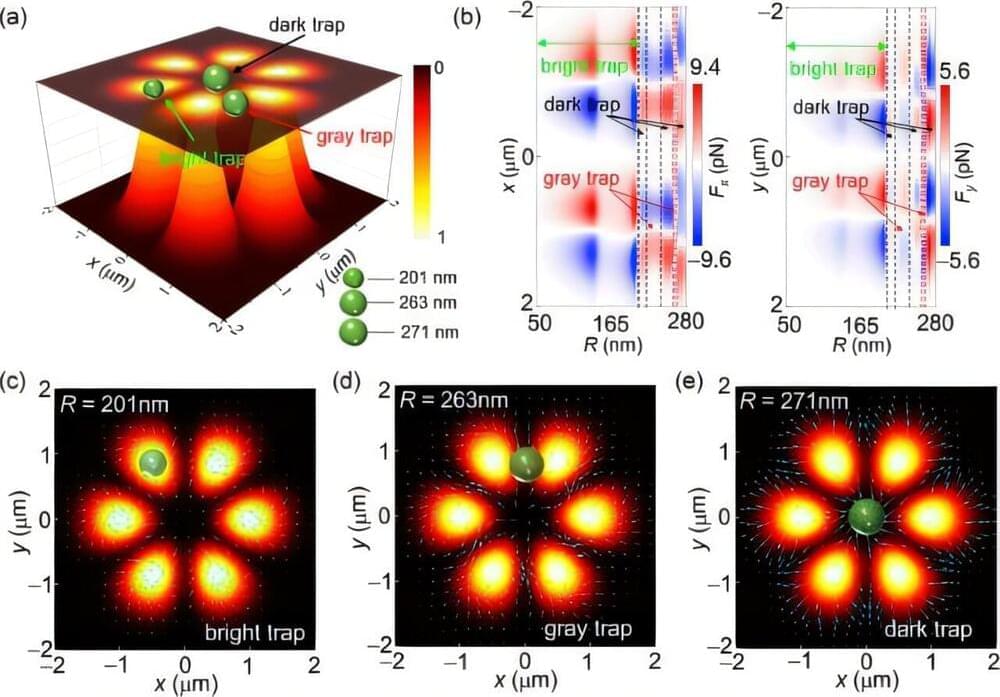
A research group led by Prof. Yao Baoli and Dr. Xu Xiaohao from Xi’an Institute of Optics and Precision Mechanics (XIOPM) of the Chinese Academy of Sciences have revealed a full-gray optical trap in structured light, which is able to capture nanoparticles but appears at the region where the intensity is neither maximized nor minimized. The study is published in Physical Review A.
The optical trap is one of the greatest findings in optics and photonics. Since the pioneering work by Arthur Ashkin in the 1970s, the optical trap has been employed in a broad range of applications in life sciences, physics, and engineering. Akin to its thermal and acoustic counterparts, this trap is typically either bright or dark, located at the field intensity maxima or minima.
In this study, researchers developed a high-order multipole model for gradient forces based on multipole expansion theory. Through immersing the Si particles in the structured light with a petal-shaped field, they found that the high-order multipole gradient forces can trap Si particles at the optical intensity, which is neither maximized nor minimized.
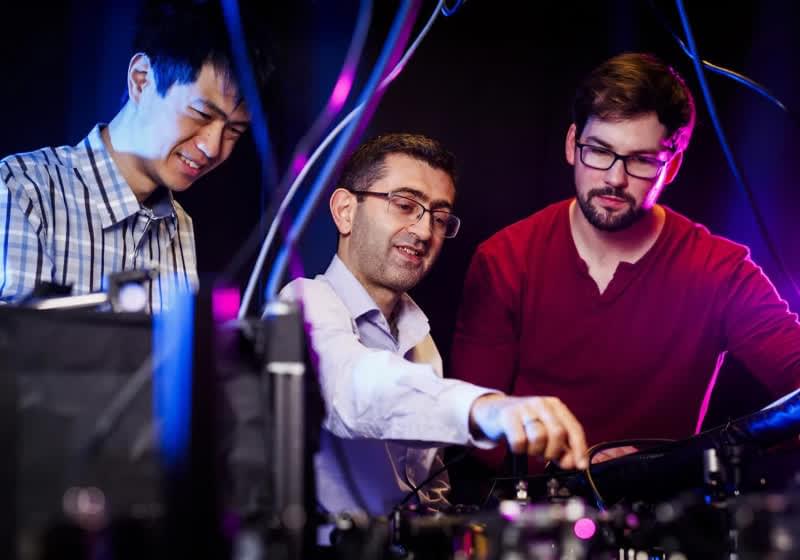
The research team, led by physics professor Nuh Gedik, concentrated on a material called FePS₃, a type of antiferromagnet that transitions to a non-magnetic state at around −247°F. They hypothesized that precisely exciting the vibrations of FePS₃’s atoms with lasers could disrupt its typical antiferromagnetic alignment and induce a new magnetic state.
In conventional magnets (ferromagnets), all atomic spins align in the same direction, making their magnetic field easy to control. In contrast, antiferromagnets have a more complex up-down-up-down spin pattern that cancels out, resulting in zero net magnetization. While this property makes antiferromagnets highly resistant to stray magnetic influences – an advantage for secure data storage – it also creates challenges in intentionally switching them between “0” and “1” states for computing.
Gedik’s innovative laser-driven approach seeks to overcome this obstacle, potentially unlocking antiferromagnets for future high-performance memory and computational technologies.